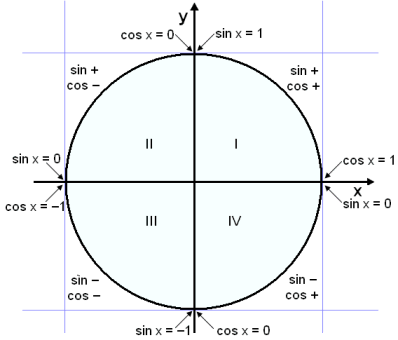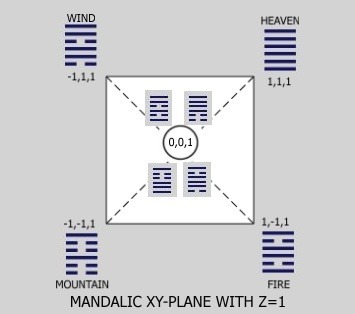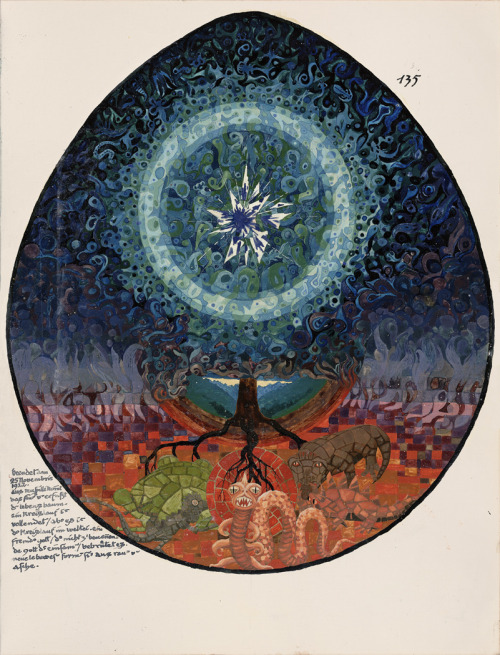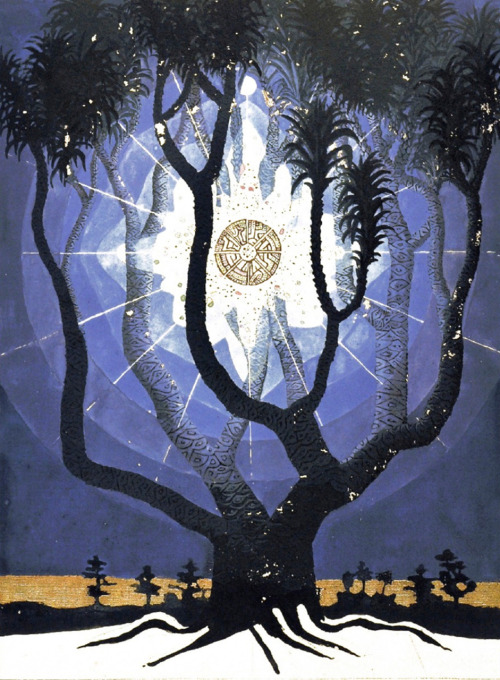#carl jung
Book Club: Demian by Hermann Hesse
[Originally published on my Medium page: link here]

- Rate: 4/5
- Time: Can be read in less than a day
- Length: Smidge over 100 pages (short)
Demian is a coming-of-age novel of the protagonist and narrator Emil Sinclair. The reader is pulled into Sinclair’s psychological labyrinth as it grows desire, fear, confusion, and frustrations with the world and his own being. The underlying themes of the book bringing up age-old discussion and interpretations that reads differently towards every reader. I’d like to say that the first half reads as an autobiography of an ordinary person. The last bit of the novel does venture deep into Carl Jung’s’ theory of the collective unconscious, embedding archetypes and symbolisms that would make Jung proud.
I planned to take my time, reading only two chapters a sitting. However, it became impossible to want to put it down. Didn’t love Sinclair nor felt particularly any hate for him, I was curious to see where Sinclair ended up; Hesse has a way of introducing a character and wrapping you into them, as opposed to their world or relationships. I will say that I had to double-take when trying to figure out the Emil/Demian/Eva scenes.
Would you need to know psychology to enjoy the book? Nope, it’s a good story for readers that love classics and take pride in discussion (either alone or with a book club!)
Would it help to know a little psychology? Yes, and it’ll take you on a margin scribbling joyride.
Final sayings? Totally PG should be in the school curriculum, and the egg/bird quote is phenomenal
If you’ve already read it or don’t care for spoilers keep reading below.
Concept Spoilers:
- TWO WORLDS: At first glance, this concept seems to reflect heavily on religious upbringing that a vast majority of individuals experience. The notion of growing up with preconceived ideologies attach Sinclair to dogmatic judgements of everything from the world, his peers, and even towards himself. While this concept and system of rights and wrongs does hold some foundation, it doesn’t encompass the complexity of the real world. The black and white perspective gets ultimately defeated and rendered useless when the argument of what is forbidden and permitted come up. The individual is in control of the rights and wrongs through their own boundaries, the external enforcement (be it laws or religion) deters back the Lawrence Kohlberg’s first level of cognitive development.
- DEMIAN: Theres an interesting push and pull throughout the novel, as Demian, this enigmatic characters is a key figure in the development of Sinclair, allows Sinclair to do as he pleases only acting and speaking in pivotal scenes. Arriving with a district interpretation of the biblical Cain and Abel, he embodies the conflict and the temptation of breaking out of the two worlds view. He lets Emil retreat into his safe heaven after rescuing him from Franz’ tormenting, withdrawing his thoughts when going too far, and not interfering when seeing him at his lowest point. Guidance is the main word that comes up when thinking of Demian and he plays the role flawlessly.
- ABRAXAS: I think the presence of the bird/egg painting and Abraxas is the major turning point in the novel where Emil goes from going through life to seeking a purpose and venturing into and outside of himself. Can write a 10 page essay on just how much I love the quote. The processes of Emil being introduced to his passion and his life goal and desires depends desperately on him breaking free from his past self and world. To be reborn into something new there must be the destruction of the old self/way. Abraxas also has strong attachment towards mysticism, mystery, and exclusivity of acquired knowledge - it is something that is not found by accident, but by intention.
- PSYCHOLOGY: The concepts are there and this book provides great points of psychological discussion involving Freuds’ Oedipus complex and the majority of archetypes and symbols in Jung’s Collective unconscious. This shifts a lot of the relationships between the characters to be treated more like symbolic events/theories and personas. It’s would be simple to say Emil love Eva, but it wouldn’t do the novel justice by dismissing many other references that fit into this; such as the great mother, the dual mothers, and the animus-anima. Pick your poison, explore, and discuss.
Noteworthy Quotes:
- When poets write novels they are apt to behave as if they were gods, with the power to look beyond and comprehend any human story and serve it up as if the almighty himself, omnipresent, were relating it in all its naked truth. (Prologue, Demian)
- When I pictured the devil to myself, I found no difficulty in visualizing him in the streets below, disguised or undisguised, or at the fair or at the taverns but never at home. (Chapter 1, Demian)
- He too was a ‘temper’ and moreover my link with the second, evil world with which I never wanted anything more to do. (Chapter 2, Demian)
- Therefore each one of us must discover for himself what is permitted and what is forbidden as far as he himself is concerned. It is possible never to do a forbidden thing yet be the real villain. (Chapter 3, Demian)
- It was the pattern of my life and death; It expressed the tone and rhythm of my fate. (Chapter 4, Demian)
- The bird is struggling out of the egg. The egg is the world. Whoever wants to be born must first destroy a world. The bird id flying to god. The name of the god is called Abraxas. (Chapter 5, Demian)
- When we hate someone we are hating something that is within ourselves, in his image. We are never stirred up by something which does not already exist within us. (Chapter 6, Demian)
- I have grown accustomed to my inner life, resigned to the fact that I had lost my feeling for the outside world and that the loss of its bright colors was an inseparable part of the loss of childhood and that one must to some extent pay for the freedom and maturity of the soul with the renunciation of those pure gleams of light. (Chapter 6, Demian)
P V T R E F A C T I O
Blacker than the blackest black.
Carl Jung: Psicología y Alquimia(Psychologie und Alchimie), 1944.
Post link

Carl Jung, The Fight with the Shadow, tr. R. F. C. Hull
“In all chaos there is a cosmos, in all disorder a secret order.”
Carl Jung
Art by Andrew Davidson
Post link
“Loneliness does not come from having no people around you, but from being unable to communicate the things that seem important to you.”
— Carl Jung
Beyond the Enlightenment Rationalists:
From imaginary to probable numbers - III

(continued from here)
My objection to the imaginary dimension is not that we cannot see it. Our senses cannot identify probable dimensions either, at least not in the visually compelling manner they can the three Cartesian dimensions. The question here is not whether imaginary numbers are mathematically true. How could they not be? The cards were stacked in their favor. They were defined in such a manner, – consistently and based on axioms long accepted valid, – that they are necessarily mathematically true. There’s a word for that sort of thing. –The word is tautological.– No, the decisive question is whether imaginary numbers apply to the real world; whether they are scientifically true, and whether physicists can truly rely on them to give empirically verifiable results with maps that accurately reproduce mechanisms actually used in nature.[1]
The geometric interpretation of imaginary numbers was established as a belief system using the Cartesian line extending from -1,0,0 through the origin 0,0,0 to 1,0,0 as the sole real axis left standing in the complex plane. In 1843, William Rowan Hamilton introduced two additional axes in a quaternion coordinate system. The new jandk axes, similar to the i axis, encode coordinates of imaginary dimensions. So the complex plane has one real axis, one imaginary; the quaternion system, three imaginary axes, one real, to accomplish which though involved loss of commutative multiplication. The mandalic coordinate system has three real axes upon which are superimposed six probable axes. It is both fully commensurate with the Cartesian system of real numbers and fully commutative for all operations throughout all dimensions as well.[2]
All of these coordinate systems have a central origin point which all other points use as a locus of reference to allow clarity and consistency in determination of location. The mandalic coordinate system is unique in that this point of origin is not a null point of emptiness as in all the other locative systems, but a point of effulgence. In that location where occur Descartes’ triple zero triad (0.0.0) and the complex plane’s real zero plus imaginary zero (ax=0,bi=0), we find eight related hexagrams, all having neutral charge density, each of these consisting of inverse trigrams with corresponding Lines of opposite charge, canceling one another out. These eight hexagrams are the only hexagrams out of sixty-four total possessing both of these characteristics.[3]

So let’s begin now to plot the points of the mandalic coordinate system with the view of comparing its dimensions and points with those of the complex plane.[4] The eight centrally located hexagrams all refer to and are commensurate with the Cartesian triad (0,0,0). In a sense they can be considered eight alternative possible states which can exist in this locale at different times. These are hybrid forms of the four complementary pair of hexagrams found at antipodal vertices of the mandalic cube. The eight vertex hexagrams are those with upper and lower trigrams identical. This can occur nowhere else in the mandalic cube because there are only eight trigrams.[5]

From the origin multiple probability waves of dimension radiate out toward the central points of the faces of the cube, where these divergent force fields rendezvous and interact with reciprocal forces returning from the eight vertices at the periphery. converging toward the origin. Each of these points at the six face centers are common intersections of another eight particulate states or force fields analogous to the origin point except that four originate within this basic mandalic module and four without in an adjacent tangential module. Each of the six face centers then is host to four internal resident hexagrams which share the point in some manner, time-sharing or other. The end result is the same regardless, probabilistic expression of characteristic form and function. There is a possibility that this distribution of points and vectors could be or give rise to a geometric interpretation of the Schrödinger equation, the fundamental equation of physics for describing quantum mechanical behavior. Okay, that’s clearly a wild claim, but in the event you were dozing off you should now be fully awake and paying attention.
The vectors connecting centers of opposite faces of an ordinary cube through the cube center or origin of the Cartesian coordinate system are at 180° to each other forming the three axes of the system corresponding to the number of dimensions. The mandalic cube has 24 such axes, eight of which accompany each Cartesian axis thereby shaping a hybrid 6D/3D coordinate system. Each face center then hosts internally four hexagrams formed by hybridization of trigrams in opposite vertices of diagonals of that cube face, taking one trigram (upper or lower) from one vertex and the other trigram (lower or upper) from the other vertex. This means that a face of the mandalic cube has eight diagonals, all intersecting at the face center, whereas a face of the ordinary cube has only two.[6]

The circle in the center of this figure is intended to indicate that the two pairs of antipodal hexagrams at this central point of the cube face rotate through 90° four times consecutively to complete a 360° revolution. But I am describing the situation here in terms of revolution only to show an analogy to imaginary numbers. The actual mechanisms involved can be better characterized as inversions (reflections through a point), and the bottom line here is that for each diagonal of a square, the corresponding mandalic square has a possibility of 4 diagonals; for each diagonal of a cube, the corresponding mandalic cube has a possibility of 8 diagonals. For computer science, such a multiplicity of possibilities offers a greater number of logic gates in the same computing space and the prospect of achieving quantum computing sooner than would be otherwise likely.[7]
Similarly, the twelve edge centers of the ordinary cube host a single Cartesian point, but the superposed mandalic cube hosts two hexagrams at the same point. These two hexagrams are always inverse hybrids of the two vertex hexagrams of the particular edge. For example, the edge with vertices WIND over WIND and HEAVEN over HEAVEN has as the two hybrid hexagrams at the center point of the edge WIND over HEAVEN and HEAVEN over WIND. Since the two vertices of concern here connect with one another via the horizontal x-dimension, the two hybrids differ from the parents and one another only in Lines 1 and 4 which correspond to this dimension. The other four Lines encode the y- amd z-dimensions, therefore remain unchanged during all transformations undergone in the case illustrated here.[8]

This post began as a description of the structure of the mandalic coordinate system and how it differs from those of the complex plane and quaternions. In the composition, it became also a passable introduction to the method of composite dimension. Additional references to the way composite dimension works can be found scattered throughout this blog and Hexagramium Organum. Basically the resulting construction can be thought of as a tensegrity structure, the integrity of which is maintained by opposing forces in equilibrium throughout, which operate continually and never fail, a feat only nature is capable of. We are though permitted to map the process if we can manage to get past our obsession with and addiction to the imaginary and complex numbers and quaternions.[9]
In our next session we’ll flesh out probable dimension a bit more with some illustrative examples. And possibly try putting some lipstick on that PIG (Presumably Imaginary Garbage) to see if it helps any.
(continuedhere)
Image: A drawing of the first four dimensions. On the left is zero dimensions (a point) and on the right is four dimensions (A tesseract). There is an axis and labels on the right and which level of dimensions it is on the bottom. The arrows alongside the shapes indicate the direction of extrusion. By NerdBoy1392 (Own work) [CC BY-SA 3.0orGFDL],via Wikimedia Commons
Notes
[1] For more on this theme, regarding quaternions, see Footnote [1] here. My own view is that imaginary numbers, complex plane and quaternions are artificial devices, invented by rational man, and not found in nature. Though having limited practical use in representation of rotations in ordinary space they have no legitimate application to quantum spaces, nor do they have any substantive or requisite relation to square root, beyond their fortuitous origin in the Rationalists’ dissection and codification of square root historically, but that part of the saga was thoroughly misguided. We wuz bamboozled. Why persist in this folly? Look carefully without preconception and you’ll see this emperor’s finery is wanting. It is not imperative to use imaginary numbers to represent rotation in a plane. There are other, better ways to achieve the same. One would be to use sin and cos functions of trigonometry which periodically repeat every 360°. (Read more about trigonometric functions here.) Another approach would be to use polar coordinates.

[SOURCE]
A quaternion, on the other hand, is a four-element vector composed of a single real element and three complex elements. It can be used to encode any rotation in a 3D coordinate system. There are other ways to accomplish the same, but the quaternion approach offers some advantages over these. For our purposes here what needs to be understood is that mandalic coordinates encode a hybrid 6D/3D discretized space. Quaternions are applicable only to continuous three-dimensional space. Ultimately, the two reside in different worlds and can’t be validly compared. The important point here is that each has its own appropriate domain of judicious application. Quaternions can be usefully and appropriately applied to rotations in ordinary three-dimensional space, but not to locations or changes of location in quantum space. For description of such discrete spaces, mandalic coordinates are more appropriate, and their mechanism of action isn’t rotation but inversion (reflection through a point.) Only we’re not speaking here about inversion in Euclidean space, which is continuous, but in discrete space, a kind of quasi-Boolean space, a higher-dimensional digital space (grid or lattice space). In the case of an electron this would involve an instantaneous jump from one electron orbital to another.
[2] I think another laudatory feature of mandalic coordinates is the fact that they are based on a thought system that originated in human prehistory, the logic of the primal I Ching. The earliest strata of this monumental work are actually a compendium of combinatorics and a treatise on transformations, unrivaled until modern times, one of the greatest intellectual achievements of humankind of any Age. Yet its true significance is overlooked by most scholars, sinologists among them. One of the very few intellectuals in the West who knew its true worth and spoke openly to the fact, likely at no small risk to his professional standing, was Carl Jung, the great 20th century psychologist and philosopher.
It is of relevance to note here that all the coordinate systems mentioned are, significantly, belief systems of a sort. The mandalic coordinate system goes beyond the others though, in that it is based on a still more extensive thought system, as the primal I Ching encompasses an entire cultural worldview. The question of which, if any, of these coordinate systems actually applies to the natural order is one for science, particularly physics and chemistry, to resolve.
Meanwhile, it should be noted that neither the complex plane nor quaternions refer to any dimensions beyond the ordinary three, at least not in the manner of their current common usage. They are simply alternative ways of viewing and manipulating the two- and three-dimensions described by Euclid and Descartes. In this sense they are little different from polar coordinatesortrigonometry in what they are attempting to depict. Yes, quaternions apply to three dimensions, while polar coordinates and trigonometry deal with only two. But then there is the method of Euler angles which describes orientation of a rigid body in three dimensions and can substitute for quaternions in practical applications.
A mandalic coordinate system, on the other hand, uniquely introduces entirely new features in its composite potential dimensions and probable numbers which I think have not been encountered heretofore. These innovations do in fact bring with them true extra dimensions beyond the customary three and also the novel concept of dimensional amplitudes. Of additional importance is the fact that the mandalic method relates not to rotation of rigid bodies, but to interchangeability and holomalleability of parts by means of inversions through all the dimensions encompassed, a feature likely to make it useful for explorations and descriptions of particle interactions of quantum mechanics. Because the six extra dimensions of mandalic geometry may, in some manner, relate to the six extra dimensions of the 6-dimensional Calabi–Yau manifold, mandalic geometry might equally be of value in string theoryandsuperstring theory.
Itis possible to use mandalic coordinates to describe rotations of rigid bodies in three dimensions, certainly, as inversions can mimic rotations, but this is not their most appropriate usage. It is overkill of a sort. They are capable of so much more and this particular use is a degenerate one in the larger scheme of things.
[3] This can be likened to a quark/gluon soup. It is a unique and very special state of affairs that occurs here. Physicists take note. Don’t let any small-minded pure mathematicians dissuade you from the truth. They will likely write all this off as “sacred geometry.” Which it is, of course, but also much more. Hexagram superpositions and stepwise dimensional transitions of the mandalic coordinate system could hold critical clues to quantum entanglement and quantum gravity. My apologies to those mathematicians able to see beyond the tip of their noses. I was not at all referring to you here.
[4] Hopefully also with dimensions and points of the quaternion coordinate system once I understand the concepts involved better than I do currently. It should meanwhile be underscored that full comprehension of quaternions is not required to be able to identify some of their more glaring inadequacies.
[5] In speaking of "existing at the same locale at different times" I need to remind the reader and myself as well that we are talking here about particles or other subatomic entities that are moving at or near the speed of light,- - -so very fast indeed. If we possessed an instrument that allowed us direct observation of these events, our biologic visual equipment would not permit us to distinguish the various changes taking place. Remember that thirty frames a second of film produces the illusion of motion. Now consider what thirty thousand frames a second of repetitive action would do. I think it would produce the illusion of continuity or standing still with no changes apparent to our antediluvian senses.
[6] Each antipodal pair has four different possible ways of traversing the face center. Similarly, the mandalic cube has thirty-two diagonals because there are eight alternative paths by which an antipodal pair might traverse the cube center. This just begins to hint at the tremendous number of transformational paths the mandalic cube is able to represent, and it also explains why I refer to dimensions involved as potentialorprobable dimensions and planes so formed as probable planes. All of this is related to quantum field theory (QFT), but that is a topic of considerable complexity which we will reserve for another day.
[7] One advantageous way of looking at this is to see that the probabilistic nature of the mandalic coordinate system in a sense exchanges bits for qubits and super-qubits through creation of different levels of logic gates that I have referred to elsewhere as different amplitudes of dimension.
[8] Recall that the Lines of a hexagram are numbered 1 to 6, bottom to top. Lines 1 and 4 correspond to, and together encode, the Cartesian x-dimension. When both are yang (+), application of the method of composite dimension results in the Cartesian value +1; when both yin (-), the Cartesian value -1. When either Line 1 or Line 4 is yang (+) but not both (Boole’s exclusive OR) the result is one of two possible zero formations by destructive interference. Both of these correspond to (and either encodes) the single Cartesian zero (0). Similarly hexagram Lines 2 and 5 correspond to and encode the Cartesian y-dimension; Lines 3 ane 6, the Cartesian z-dimension. This outline includes all 9 dimensions of the hybrid 6D/3D coordinate system: 3 real dimensions and the 6 corresponding probable dimensions. No imaginary dimensions are used; no complex plane; no quaternions. And no rotations. This coordinate system is based entirely on inversion (reflection through a point) and on constructive or destructive interference. Those are the two principal mechanisms of composite dimension.
[9] The process as mapped here is an ideal one. In the real world errors do occur from time to time. Such errors are an essential and necessary aspect of evolutionary process. Without error, no change. And by implication, likely no continuity for long either, due to external damaging and incapacitating factors that a natural world devoid of error never learned to overcome. Errors are the stepping stones of evolution, of both biological and physical varieties.
© 2016 Martin Hauser
Please note: The content and/or format of this post may not be in finalized form. Reblog as a TEXT post will contain this caveat alerting readers to refer to the current version in the source blog. A LINK post will itself do the same. :)
Scroll to bottom for links to Previous / Next pages (if existent). This blog builds on what came before so the best way to follow it is chronologically. Tumblr doesn’t make that easy to do. Since the most recent page is reckoned as Page 1 the number of the actual Page 1 continually changes as new posts are added. To determine the number currently needed to locate Page 1 go to the most recent post which is here. The current total number of pages in the blog will be found at the bottom. The true Page 1 can be reached by changing the web address mandalicgeometry.tumblr.com to mandalicgeometry.tumblr.com/page/x, exchanging my current page number for x and entering. To find a different true page(p) subtract p from x+1 to get the number(n) to use. Place n in the URL instead of x (mandalicgeometry.tumblr.com/page/n) where
n = x + 1 - p. :)
-Page 308-
Beyond the Enlightenment Rationalists:
From imaginary to probable numbers - III

(continued from here)
My objection to the imaginary dimension is not that we cannot see it. Our senses cannot identify probable dimensions either, at least not in the visually compelling manner they can the three Cartesian dimensions. The question here is not whether imaginary numbers are mathematically true. How could they not be? The cards were stacked in their favor. They were defined in such a manner, – consistently and based on axioms long accepted valid, – that they are necessarily mathematically true. There’s a word for that sort of thing. –The word is tautological.– No, the decisive question is whether imaginary numbers apply to the real world; whether they are scientifically true, and whether physicists can truly rely on them to give empirically verifiable results with maps that accurately reproduce mechanisms actually used in nature.[1]
The geometric interpretation of imaginary numbers was established as a belief system using the Cartesian line extending from -1,0,0 through the origin 0,0,0 to 1,0,0 as the sole real axis left standing in the complex plane. In 1843, William Rowan Hamilton introduced two additional axes in a quaternion coordinate system. The new jandk axes, similar to the i axis, encode coordinates of imaginary dimensions. So the complex plane has one real axis, one imaginary; the quaternion system, three imaginary axes, one real, to accomplish which though involved loss of commutative multiplication. The mandalic coordinate system has three real axes upon which are superimposed six probable axes. It is both fully commensurate with the Cartesian system of real numbers and fully commutative for all operations throughout all dimensions as well.[2]
All of these coordinate systems have a central origin point which all other points use as a locus of reference to allow clarity and consistency in determination of location. The mandalic coordinate system is unique in that this point of origin is not a null point of emptiness as in all the other locative systems, but a point of effulgence. In that location where occur Descartes’ triple zero triad (0.0.0) and the complex plane’s real zero plus imaginary zero (ax=0,bi=0), we find eight related hexagrams, all having neutral charge density, each of these consisting of inverse trigrams with corresponding Lines of opposite charge, canceling one another out. These eight hexagrams are the only hexagrams out of sixty-four total possessing both of these characteristics.[3]

So let’s begin now to plot the points of the mandalic coordinate system with the view of comparing its dimensions and points with those of the complex plane.[4] The eight centrally located hexagrams all refer to and are commensurate with the Cartesian triad (0,0,0). In a sense they can be considered eight alternative possible states which can exist in this locale at different times. These are hybrid forms of the four complementary pair of hexagrams found at antipodal vertices of the mandalic cube. The eight vertex hexagrams are those with upper and lower trigrams identical. This can occur nowhere else in the mandalic cube because there are only eight trigrams.[5]

From the origin multiple probability waves of dimension radiate out toward the central points of the faces of the cube, where these divergent force fields rendezvous and interact with reciprocal forces returning from the eight vertices at the periphery. converging toward the origin. Each of these points at the six face centers are common intersections of another eight particulate states or force fields analogous to the origin point except that four originate within this basic mandalic module and four without in an adjacent tangential module. Each of the six face centers then is host to four internal resident hexagrams which share the point in some manner, time-sharing or other. The end result is the same regardless, probabilistic expression of characteristic form and function. There is a possibility that this distribution of points and vectors could be or give rise to a geometric interpretation of the Schrödinger equation, the fundamental equation of physics for describing quantum mechanical behavior. Okay, that’s clearly a wild claim, but in the event you were dozing off you should now be fully awake and paying attention.
The vectors connecting centers of opposite faces of an ordinary cube through the cube center or origin of the Cartesian coordinate system are at 180° to each other forming the three axes of the system corresponding to the number of dimensions. The mandalic cube has 24 such axes, eight of which accompany each Cartesian axis thereby shaping a hybrid 6D/3D coordinate system. Each face center then hosts internally four hexagrams formed by hybridization of trigrams in opposite vertices of diagonals of that cube face, taking one trigram (upper or lower) from one vertex and the other trigram (lower or upper) from the other vertex. This means that a face of the mandalic cube has eight diagonals, all intersecting at the face center, whereas a face of the ordinary cube has only two.[6]

The circle in the center of this figure is intended to indicate that the two pairs of antipodal hexagrams at this central point of the cube face rotate through 90° four times consecutively to complete a 360° revolution. But I am describing the situation here in terms of revolution only to show an analogy to imaginary numbers. The actual mechanisms involved can be better characterized as inversions (reflections through a point), and the bottom line here is that for each diagonal of a square, the corresponding mandalic square has a possibility of 4 diagonals; for each diagonal of a cube, the corresponding mandalic cube has a possibility of 8 diagonals. For computer science, such a multiplicity of possibilities offers a greater number of logic gates in the same computing space and the prospect of achieving quantum computing sooner than would be otherwise likely.[7]
Similarly, the twelve edge centers of the ordinary cube host a single Cartesian point, but the superposed mandalic cube hosts two hexagrams at the same point. These two hexagrams are always inverse hybrids of the two vertex hexagrams of the particular edge. For example, the edge with vertices WIND over WIND and HEAVEN over HEAVEN has as the two hybrid hexagrams at the center point of the edge WIND over HEAVEN and HEAVEN over WIND. Since the two vertices of concern here connect with one another via the horizontal x-dimension, the two hybrids differ from the parents and one another only in Lines 1 and 4 which correspond to this dimension. The other four Lines encode the y- amd z-dimensions, therefore remain unchanged during all transformations undergone in the case illustrated here.[8]

This post began as a description of the structure of the mandalic coordinate system and how it differs from those of the complex plane and quaternions. In the composition, it became also a passable introduction to the method of composite dimension. Additional references to the way composite dimension works can be found scattered throughout this blog and Hexagramium Organum. Basically the resulting construction can be thought of as a tensegrity structure, the integrity of which is maintained by opposing forces in equilibrium throughout, which operate continually and never fail, a feat only nature is capable of. We are though permitted to map the process if we can manage to get past our obsession with and addiction to the imaginary and complex numbers and quaternions.[9]
In our next session we’ll flesh out probable dimension a bit more with some illustrative examples. And possibly try putting some lipstick on that PIG (Presumably Imaginary Garbage) to see if it helps any.
(continuedhere)
Image: A drawing of the first four dimensions. On the left is zero dimensions (a point) and on the right is four dimensions (A tesseract). There is an axis and labels on the right and which level of dimensions it is on the bottom. The arrows alongside the shapes indicate the direction of extrusion. By NerdBoy1392 (Own work) [CC BY-SA 3.0orGFDL],via Wikimedia Commons
Notes
[1] For more on this theme, regarding quaternions, see Footnote [1] here. My own view is that imaginary numbers, complex plane and quaternions are artificial devices, invented by rational man, and not found in nature. Though having limited practical use in representation of rotations in ordinary space they have no legitimate application to quantum spaces, nor do they have any substantive or requisite relation to square root, beyond their fortuitous origin in the Rationalists’ dissection and codification of square root historically, but that part of the saga was thoroughly misguided. We wuz bamboozled. Why persist in this folly? Look carefully without preconception and you’ll see this emperor’s finery is wanting. It is not imperative to use imaginary numbers to represent rotation in a plane. There are other, better ways to achieve the same. One would be to use sin and cos functions of trigonometry which periodically repeat every 360°. (Read more about trigonometric functions here.) Another approach would be to use polar coordinates.

[SOURCE]
A quaternion, on the other hand, is a four-element vector composed of a single real element and three complex elements. It can be used to encode any rotation in a 3D coordinate system. There are other ways to accomplish the same, but the quaternion approach offers some advantages over these. For our purposes here what needs to be understood is that mandalic coordinates encode a hybrid 6D/3D discretized space. Quaternions are applicable only to continuous three-dimensional space. Ultimately, the two reside in different worlds and can’t be validly compared. The important point here is that each has its own appropriate domain of judicious application. Quaternions can be usefully and appropriately applied to rotations in ordinary three-dimensional space, but not to locations or changes of location in quantum space. For description of such discrete spaces, mandalic coordinates are more appropriate, and their mechanism of action isn’t rotation but inversion (reflection through a point.) Only we’re not speaking here about inversion in Euclidean space, which is continuous, but in discrete space, a kind of quasi-Boolean space, a higher-dimensional digital space (grid or lattice space). In the case of an electron this would involve an instantaneous jump from one electron orbital to another.
[2] I think another laudatory feature of mandalic coordinates is the fact that they are based on a thought system that originated in human prehistory, the logic of the primal I Ching. The earliest strata of this monumental work are actually a compendium of combinatorics and a treatise on transformations, unrivaled until modern times, one of the greatest intellectual achievements of humankind of any Age. Yet its true significance is overlooked by most scholars, sinologists among them. One of the very few intellectuals in the West who knew its true worth and spoke openly to the fact, likely at no small risk to his professional standing, was Carl Jung, the great 20th century psychologist and philosopher.
It is of relevance to note here that all the coordinate systems mentioned are, significantly, belief systems of a sort. The mandalic coordinate system goes beyond the others though, in that it is based on a still more extensive thought system, as the primal I Ching encompasses an entire cultural worldview. The question of which, if any, of these coordinate systems actually applies to the natural order is one for science, particularly physics and chemistry, to resolve.
Meanwhile, it should be noted that neither the complex plane nor quaternions refer to any dimensions beyond the ordinary three, at least not in the manner of their current common usage. They are simply alternative ways of viewing and manipulating the two- and three-dimensions described by Euclid and Descartes. In this sense they are little different from polar coordinatesortrigonometry in what they are attempting to depict. Yes, quaternions apply to three dimensions, while polar coordinates and trigonometry deal with only two. But then there is the method of Euler angles which describes orientation of a rigid body in three dimensions and can substitute for quaternions in practical applications.
A mandalic coordinate system, on the other hand, uniquely introduces entirely new features in its composite potential dimensions and probable numbers which I think have not been encountered heretofore. These innovations do in fact bring with them true extra dimensions beyond the customary three and also the novel concept of dimensional amplitudes. Of additional importance is the fact that the mandalic method relates not to rotation of rigid bodies, but to interchangeability and holomalleability of parts by means of inversions through all the dimensions encompassed, a feature likely to make it useful for explorations and descriptions of particle interactions of quantum mechanics. Because the six extra dimensions of mandalic geometry may, in some manner, relate to the six extra dimensions of the 6-dimensional Calabi–Yau manifold, mandalic geometry might equally be of value in string theoryandsuperstring theory.
Itis possible to use mandalic coordinates to describe rotations of rigid bodies in three dimensions, certainly, as inversions can mimic rotations, but this is not their most appropriate usage. It is overkill of a sort. They are capable of so much more and this particular use is a degenerate one in the larger scheme of things.
[3] This can be likened to a quark/gluon soup. It is a unique and very special state of affairs that occurs here. Physicists take note. Don’t let any small-minded pure mathematicians dissuade you from the truth. They will likely write all this off as “sacred geometry.” Which it is, of course, but also much more. Hexagram superpositions and stepwise dimensional transitions of the mandalic coordinate system could hold critical clues to quantum entanglement and quantum gravity. My apologies to those mathematicians able to see beyond the tip of their noses. I was not at all referring to you here.
[4] Hopefully also with dimensions and points of the quaternion coordinate system once I understand the concepts involved better than I do currently. It should meanwhile be underscored that full comprehension of quaternions is not required to be able to identify some of their more glaring inadequacies.
[5] In speaking of "existing at the same locale at different times" I need to remind the reader and myself as well that we are talking here about particles or other subatomic entities that are moving at or near the speed of light,- - -so very fast indeed. If we possessed an instrument that allowed us direct observation of these events, our biologic visual equipment would not permit us to distinguish the various changes taking place. Remember that thirty frames a second of film produces the illusion of motion. Now consider what thirty thousand frames a second of repetitive action would do. I think it would produce the illusion of continuity or standing still with no changes apparent to our antediluvian senses.
[6] Each antipodal pair has four different possible ways of traversing the face center. Similarly, the mandalic cube has thirty-two diagonals because there are eight alternative paths by which an antipodal pair might traverse the cube center. This just begins to hint at the tremendous number of transformational paths the mandalic cube is able to represent, and it also explains why I refer to dimensions involved as potentialorprobable dimensions and planes so formed as probable planes. All of this is related to quantum field theory (QFT), but that is a topic of considerable complexity which we will reserve for another day.
[7] One advantageous way of looking at this is to see that the probabilistic nature of the mandalic coordinate system in a sense exchanges bits for qubits and super-qubits through creation of different levels of logic gates that I have referred to elsewhere as different amplitudes of dimension.
[8] Recall that the Lines of a hexagram are numbered 1 to 6, bottom to top. Lines 1 and 4 correspond to, and together encode, the Cartesian x-dimension. When both are yang (+), application of the method of composite dimension results in the Cartesian value +1; when both yin (-), the Cartesian value -1. When either Line 1 or Line 4 is yang (+) but not both (Boole’s exclusive OR) the result is one of two possible zero formations by destructive interference. Both of these correspond to (and either encodes) the single Cartesian zero (0). Similarly hexagram Lines 2 and 5 correspond to and encode the Cartesian y-dimension; Lines 3 ane 6, the Cartesian z-dimension. This outline includes all 9 dimensions of the hybrid 6D/3D coordinate system: 3 real dimensions and the 6 corresponding probable dimensions. No imaginary dimensions are used; no complex plane; no quaternions. And no rotations. This coordinate system is based entirely on inversion (reflection through a point) and on constructive or destructive interference. Those are the two principal mechanisms of composite dimension.
[9] The process as mapped here is an ideal one. In the real world errors do occur from time to time. Such errors are an essential and necessary aspect of evolutionary process. Without error, no change. And by implication, likely no continuity for long either, due to external damaging and incapacitating factors that a natural world devoid of error never learned to overcome. Errors are the stepping stones of evolution, of both biological and physical varieties.
© 2016 Martin Hauser
Please note: The content and/or format of this post may not be in finalized form. Reblog as a TEXT post will contain this caveat alerting readers to refer to the current version in the source blog. A LINK post will itself do the same. :)
Scroll to bottom for links to Previous / Next pages (if existent). This blog builds on what came before so the best way to follow it is chronologically. Tumblr doesn’t make that easy to do. Since the most recent page is reckoned as Page 1 the number of the actual Page 1 continually changes as new posts are added. To determine the number currently needed to locate Page 1 go to the most recent post which is here. The current total number of pages in the blog will be found at the bottom. The true Page 1 can be reached by changing the web address mandalicgeometry.tumblr.com to mandalicgeometry.tumblr.com/page/x, exchanging my current page number for x and entering. To find a different true page(p) subtract p from x+1 to get the number(n) to use. Place n in the URL instead of x (mandalicgeometry.tumblr.com/page/n) where
n = x + 1 - p. :)
-Page 308-
“She is a hellish-divine treasure to be kept behind walls of iron and the deepest vault. She always wants to get out and scatter glittering beauty. Beware! Does she not stand in the brilliance of immortal youth? Is her Love not the intoxicating wine and the wisdom of the primordial cleverness of serpents?”
Carl Jung, The Red Book page. 495
ThePluto portion of consciousness
“I am astonished, disappointed, pleased with myself. I am distressed, depressed, rapturous. I am all these things at once, and cannot add up the sum. I am incapable of determining ultimate worth or worthlessness; I have no judgment about myself and my life. There is nothing I am quite sure about. I have no definite convictions - not about anything, really. I know only that I was born and exist, and it seems to me that I have been carried along. I exist on the foundation of something I do not know.”—Carl Jung
I kept a blog from 2012 to 2019. This blog. I had tried others, but they sputtered and died. This one, this accidental online scrapbook, lived beyond my expectations. This became my confessional, my soapbox, my panic room, my memory palace. In many cases I didn’t know what or how I would write until I had posted my sentences, my misgivings. One thing would lead to another. Themes or patterns would emerge from an author’s body of work. Fragments of my life would merge with strands of fiction or film. And I would find more reasons, consolations, to stick around. But I was never sure what this mixed bag would amount to.
In 2017, I began fantasizing publishing a book based on my favorite posts. “Essays from the Blog,” the subtitle would say. It may sound a bit pretentious to call them “essays,” but what the heck. A number of them were indeed deeply, shamelessly personal essays, long and introspective. Some of the more circuitous or self-indulgent pieces were even surprisingly coherent and well structured. But structure was the least of my concerns then. I never intended to write proper book reviews or movie reviews; many other people with more time and talent had been doing those. I didn’t think anything here was worth monetizing. I didn’t aim to turn any of my ramblings into something viral, legit, or woke.
Still, at some point, I thought I had written enough stuff that even years later didn’t make me cringe. Oh, sure, a lot was sentimental writing, mostly incidental babble I needed to put out there to make sense of or to calm down the chaos in my head. But I had published a poetry collection, my first book, in 2008 and even designed my own cover for that one, so why not a second book, this time an essay collection based on my blog posts? (Here’s one sample cover I made in 2017, all squiggles and splatters from my shaky hands and addled brain.)
Oh, yes, one can dream. Or, at the very least, one can revisit one’s dreams. And so it’s 2022 and I’m back, sort of. I’m here again prowling my own Tumblr pages. I’m reliving some cringey moments when I was having way too much fun (or too much sadness) posting all these words and images. I see that some links are no longer working, some references or jokes are dated, and some people (men!) have been canceled. I see so much, maybe too much, I cared about—and not enough. I see the gaps, missed opportunities, so many other writers and artists and musicians, heroes of mine, I never got to write about, people I never got to thank.
Well, I did what I could, I blogged while I could. And so now, thanks to Tumblr, I can revisit all these books I’ve read, movies I’ve watched, people I’ve loved. A math teacher. A little nephew. An ex-boyfriend. The ones who danced in The Big Chill. The one who sang “Moon River.”The one that got away. Characters in a novel that made me want to go on living. Actorsandactresses who made me laugh and think. Spiritual teachers who helped me breathe. Poets who unlocked my doors.Wonder junkies.Major weepers.Old flames.New loves.Friends of my heart.Keepers of my light. “Sticking Around” was my way of thanking them all.
A few years back, when I was no longer regularly posting, a dear cousin asked me about my blog: “Is it still on? What is it about?” In an email I wrote: “Still there, but no longer as active. It’s mostly book quotes and excerpts. Usually at the end of each month, I’d write an essay that directly or indirectly explains why an author or theme mattered to me. I’d tell a story connecting that book or movie or topic in relation to a personal experience or a memory or a mood.”
Telling her what this blog was, how I did whatever it was that I thought I was doing here, made me think again of that digressive, chatty, mopey voice I had adopted (or that had adopted me) for my more personal posts. It was a persona that, ten years since this blog began, I find to be both still-me and so-not-me-anymore. Which is both unsettling and comforting now that, at 59, I find myself occasionally dipping in—and dripping with—nostalgia and yet managing to climb back onto dry land and stay curious about the years to come.
InThe Worst Person in the World, the acclaimed film directed and co-written by Joachim Trier, my favorite scene is a monologue delivered by the deeply empathetic Norwegian actor Anders Danielsen Lie. It’s about nostalgia. It’s about remembering a time when physical objects mattered most—the books we held in our hands, the record stores we browsed at. Now most of them are gone. But some of us keep going back to those pleasures, or to the memories of them, even when they no longer give us as much pleasure as they used to.
The man speaking in this quietly devastating moment attributes his sentimental mood to his being an old fart. Like him, I “grew up in an age without Internet and mobile phones.” Then he admits that all this looking back is also because he is terminally ill. There is no future for him. “Now I have nothing else” except “knowledge and memories of stupid, futile things nobody cares about.” He says it’s not even nostalgia, it’s fear of death.
So what kept me blogging all those seven years? And what makes me revisit this blog now? What keeps me revisiting favorite books, favorite scenes, favorite people, real or fictional? Yes, it’s nostalgia. But, no, not fear of death. It’s fear of losing sight of what matters. I think that’s why I keep coming back. More than ever, this blog reminds me of what mattered to me then and what still matters now. Maybe in the end it’s all there in these three words (coincidentally the title of my favorite Carl Jung book):memories, dreams, reflections. When the physical objects and the people I held dearly are no longer within reach, what else is there to hold on to?
Sure, nothing’s permanent. We lose the ones we love. We learn to look back and let go. We sputter, we wane. Late in life, I find this blog existing beyond the years I kept it. The words remain, if not on paper then on this screen, this blogosphere of fleeting pleasures and lingering pastimes. I may or may not be able to publish a book based on essays from this blog. Life is short, life is long, memory is tricky, reflections fade. But for now some dreams remain.
Fe aspirational sucks
My Family’s MBTI Types
Mom: ESTJ
Dad: ENFJ
Sister: INFJ
Me: INTP
Hmmm. So it turns out that my dad is actually ENFP…
His Te-child really likes taking charge so I assumed he was outcome focused rather than progression focused. In hindsight, it is obvious that he is not direct and is a Te user rather than an Fe user.
INTP: That’s it. I’m done. It’s over.
ENFP: Aw what happened?
INTP: I cannot fit anymore Hmong into my head. I’ve done all my allotted thinking for today. Nothing new can enter my brain.
ENFP: Wait, you started learning Hmong?? I thought you were learning Cantonese…
INTP: Yeah, but I decided I needed to add it for c l o u t . Also, why are there 56 possible consonant beginnings?
ENFP: Do I look like I speak it? XD. My parents are probably disappointed ._.;
INTP: It’s okay. I can just teach you when I’m done :^)
“Be silent and listen. Have you recognized your madness and do you admit it? Have you noticed that all your foundations are completely mired in madness? Do you not want to recognize your madness and welcome it in a friendly manner? You wanted to accept everything. So accept madness too. Let the light of your own madness shine, and it will suddenly dawn on you. Madness is not to be despised and not to be feared, but instead you should give it life.”
What is the Jungian Shadow, anyway, and why is it relevant? Here is a short new video of Shadow Tender’s artistic director, Natasha Kolosowsky, explaining & contextualizing these things + some art and dancing.
You can learn more about Shadow Tender here: http://igg.me/at/shadowtender
In brief, it’s a performance and workshop series that asks how humans create and interact with the monstrous within ourselves and in others, and seeks to provide the tools and inspiration to meet our shadows with compassion rather than fear, shame, or rejection. We’re examining these ideas through the lens of fantasy, theater, wearable sculpture, and movement, with inspiration ranging from neuroscience to alchemical philosophy. We’ve been invited to perform and teach at the World Stage Design festival this July in Taiwan, Taipei - one of the largest international performance design festivals in the world! But we’ll need your help to get there! We’re only about 26% of the way to our funding goal, and we only have a few days left of our crowdfunding campaign!
Enjoy and please feel free to share <3
To take a page from The Princess Bride; It’s got masks, and ballet, and monsters; butoh, and biofeedback technology, and prosthetics; martial arts, modern dance, and circus arts; Jungian psychology, alchemical philosophy, and neuroscience; fearsome things and tender things.
https://igg.me/at/shadowtender/x/16444076
I can’t imagine a project I would be more excited to work on right now. This is one of the largest projects I’ve ever tackled, and what I truly want my art to achieve: using the transformative magic of costumes and movement to help people understand more about themselves and even find the tools to interact more healthily with each other.
I’m working with some of the most talented artists and performers I know, but even as excited and determined as we are, we’re not going to be able to do this alone. Please take a moment to watch our video and check out our campaign. If you can contribute we’d be forever grateful, but you can help us succeed just by spreading the word. Do you know anyone who likes any of the things in that first sentence? Share this with them!
Post link

C.G. Jung, from C.G. Jung Letters, Volume 2
Text ID: the dark new moon is rising

C.G. Jung, from C.G. Jung Letters, Volume 2
Text ID: So it goes all the time: memories rise up and disappear again, as it suits them.
As to the source of visions, traditional peoples and folk magic have always said that they emanate from an unseen realm of spirits and greater spiritual beings, that is, the gods. Contemporary pagans and witches can attest to the reality and power of these beings. Through focused, committed trancework and journeying we can indeed reach the gods, know them and be known by them. When we shift away from normal consciousness we dive into Spirit, where everything and all beings can be known, if only we pursue our magical work diligently. It is said magic works according to karma, and so we will encounter not only our allies but our personal challenges. And so visioning is also a path of self discovery, growth, unfoldment and healing.
Remember that your INTENT is the key. The psychological view is that visions arise as symbolic communications from dimensions of our minds beyond our everyday awareness, which may be experienced in dreams, reveries or spiritual visions. Such psychic forms were called Archetypes by the famous Swiss psychologist Carl Jung. He considered them fully as intelligent and powerful as the legendary spirits of old. Realize that our minds ARE Spirit, and are inseparable from the fullness that It is. We descend and ascend through levels and planes of being, now in our personal dreams and fantasies, now encountering divine beings, now blending mystically with realms beyond the personal. Your experiences will no doubt lead you to your own insights, your own conclusions, and your own philosophy. Whatever you may believe about this, trance and visions allow us to realize that the potential of our minds is far beyond what we have been told about ourselves. We are magical beings. (end of series) ( revised 3/1/22 @mysteryoftheuniverse)

“Your vision will become clear only when you can look into your own heart. Who looks outside, dreams; who looks inside, awakes.” Carl G. Jung
birinin sizden vazgeçmesinin nedeni, aslında sizi onun nazarında farklı bir yere koyan kişisel imgenizi öldürmenizdir. yani sizi tahayyül ettiği karakterden uzaklaşmanız, sizi bir zamanlar vazgeçilmez kılan şeyi kendi elinizle öldürmenizdir.
alain de botton - romantik hareket

















